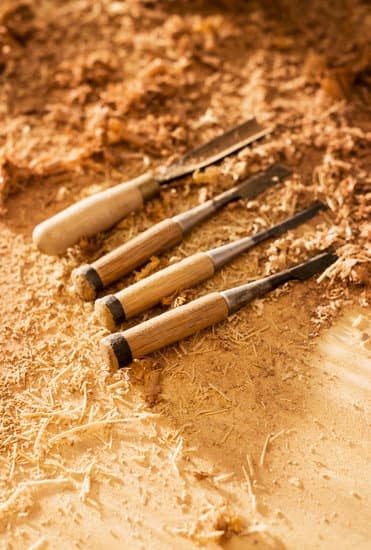Choosing the right paint for interior woodwork is crucial in creating a polished and visually appealing look for any space. Whether it’s trim, doors, cabinets, or furniture, the type of paint you select can greatly impact the overall aesthetic and durability of your woodwork.
With so many options available in the market, it can be overwhelming to determine which paint will best suit your needs. This article aims to guide you through the process of choosing the best paint for your interior woodwork by exploring different types of paints, factors to consider when selecting the right paint, top paint brands in the market, and expert tips and tricks for extending its lifespan.
When it comes to painting interior woodwork, it’s important to consider several factors beyond just color. Durability is key since woodwork is often subjected to heavy traffic and frequent use. Additionally, sheen plays a significant role as it determines how light reflects off the painted surface. Lastly, coverage is essential in achieving a smooth and even finish without multiple coats.
To simplify your decision-making process, understanding the different types of paints available for interior woodwork is necessary. From oil-based paints known for their durability and smooth finish to latex paints that offer versatility and easy clean-up, each type has its own advantages and disadvantages that should be considered.
By exploring this comprehensive guide on choosing the best paint for your interior woodwork, you will gain insights into various factors such as durability, sheen level, coverage options available across different brands. Furthermore, we will provide step-by-step instructions on how to prep, prime, and paint your woodwork like a professional while showcasing real-life examples of before and after transformations with different types of paints.
Join us as we delve into the world of interior woodwork painting and unlock the secrets to achieving exceptional results that will enhance your living space for years to come.
Understanding the Different Types of Paint for Interior Woodwork
When it comes to painting interior woodwork, choosing the right type of paint is crucial in achieving a flawless finish that not only enhances the beauty of the wood but also provides long-lasting durability. In this comprehensive guide, we will explore the different types of paint commonly used for interior woodwork.
The first type of paint to consider is oil-based paint. This traditional type of paint has been around for decades and offers excellent durability and a smooth finish. Oil-based paints have good adhesion to wood surfaces and are resistant to wear and tear, making them suitable for high-traffic areas such as doors and trim. However, it does come with a few drawbacks, including strong odors, longer drying times, and the need for mineral spirits for cleanup.
Another popular option is latex paint. Latex paint has gained popularity in recent years due to its ease of use and quick drying time. It offers great coverage and is available in a wide range of colors. Latex paints are also low in VOCs (volatile organic compounds), making them more eco-friendly than oil-based paints. They are suitable for most interior woodwork projects, including walls, cabinets, and furniture.
In addition to oil-based and latex paints, there are also specialty paints specifically designed for interior woodwork. These include enamel paints, which provide a glossy finish that adds elegance to any wood surface; satin finishes that offer a smooth sheen without excessive glare; and eggshell finishes that strike a balance between matte and glossiness. Understanding the different types of paint available will help you make an informed decision based on the specific needs of your interior woodwork project.
Factors to Consider When Selecting the Best Paint for Interior Woodwork
When it comes to selecting the best paint for interior woodwork, there are several factors that need to be considered. Durability, sheen, and coverage are three key factors that can greatly impact the overall look and longevity of your painted woodwork. In this section, we will delve deeper into each of these factors and discuss why they are important in choosing the right paint.
Durability
Durability is crucial when it comes to selecting a paint for interior woodwork. Woodwork is subject to daily wear and tear, including accidental scratches, moisture exposure, and cleaning. Therefore, it is important to choose a paint that can withstand these challenges and maintain its integrity over time. Look for paints that contain high-quality resins and binders which provide greater durability. These types of paints are less likely to chip, peel, or fade under normal conditions.
Sheen
The sheen of the paint refers to its level of glossiness or shine once it dries. Different sheen levels can create different effects on interior woodwork. High-gloss paints offer a shiny appearance that adds a modern and sophisticated touch to woodwork. They also provide better protection against moisture and stains due to their smoother surface. On the other hand, lower sheen levels such as satin or eggshell tend to hide imperfections better while offering a more subtle finish.
Coverage
Coverage refers to how well the paint covers the surface with a single coat. Adequate coverage saves both time and money by reducing the need for multiple coats of paint. Look for paints labeled as having good coverage or high hiding ability.
These types of paints are typically formulated with higher pigment volume concentration (PVC), which means they have a higher amount of solid particles per gallon. This allows them to cover existing colors or stains effectively without the need for excessive coats.
By taking into account the durability, sheen, and coverage of a paint, you can make an informed decision when selecting the best paint for your interior woodwork. Remember that each factor plays a significant role in achieving a long-lasting and visually appealing finish. It is advisable to read product labels, consult with professionals, and test different paints on a small area before committing to a larger project.
The Top Paint Brands for Interior Woodwork
When it comes to selecting the best paint for interior woodwork, choosing a high-quality and reliable brand is crucial. The top paint brands in the market offer a wide range of options that cater to different needs and preferences. In this section, we will compare the quality and performance of some of the leading paint brands for interior woodwork.
Sherwin Williams
Sherwin Williams is known for its exceptional quality and durability. Their paints are highly regarded by professionals and homeowners alike. With a vast selection of colors and finishes, Sherwin Williams offers paints that provide excellent coverage and long-lasting results. Their popular lines include Emerald Interior Acrylic Latex Paint, Duration Home Interior Acrylic Latex Paint, and ProClassic Interior Waterbased Acrylic-Alkyd Enamel.
Benjamin Moore
Benjamin Moore is another top-tier brand that consistently produces high-quality paints for interior woodwork. Their paints are highly pigmented, providing superior coverage and a beautiful finish. Some of their most popular products include Regal Select Interior Paint, Advance Waterborne Interior Alkyd Paint, and Aura Interior Paint. Benjamin Moore offers a wide range of sheen options to choose from to achieve your desired look.
Behr
Behr is a well-known name in the world of paint, offering affordable yet reliable options for interior woodwork projects. Their products are known for their excellent durability and easy application. Behr’s Marquee Interior Paint & Primer line is particularly renowned for its one-coat coverage capability, saving time without sacrificing quality. They also offer other lines such as Premium Plus Ultra Interior Enamel Paint and Ultra Scuff Defense Interior Extra Durable Eggshell Enamel.
It is important to note that while these brands are among the top choices, there are many other reputable brands available in the market as well. When selecting a paint brand, it is crucial to consider factors such as the specific needs of your project, budget, and personal preferences. Reading reviews and seeking expert advice can also help in making an informed decision.
Exploring Oil-Based Paints for Interior Woodwork
Oil-based paints have long been a popular choice for interior woodwork due to their durability and smooth finish. In this section, we will delve into the pros, cons, and best usage of oil-based paints for interior woodwork.
Firstly, let’s discuss the advantages of using oil-based paints. One of the major benefits is their exceptional durability. Oil-based paints form a hard, protective coating that is resistant to wear and tear, making them ideal for high-traffic areas like trim, doors, and cabinets.
Additionally, this type of paint has excellent adhesion properties and provides good coverage even on uneven surfaces. Oil-based paints also offer a smoother finish compared to latex paints, which can be especially appealing when painting detailed woodwork with intricate designs.
However, there are some drawbacks to consider before using oil-based paint for your interior woodwork. One notable disadvantage is the strong odor that comes with oil-based paints due to the presence of volatile organic compounds (VOCs). The fumes can be overwhelming during application and take longer to dissipate than those from latex paints.
Another downside is the longer drying time of oil-based paints, which can extend your project timeline. Additionally, cleaning up brushes and tools requires solvents like mineral spirits or paint thinner, which can be more time-consuming and less environmentally friendly than simply using water for latex paint cleanup.
To determine the best usage for oil-based paints in your interior woodwork project, consider both the location and condition of the surface you’re painting. Oil-based paint performs exceptionally well on previously painted or stained surfaces because it offers better adhesion than latex paint. It is also an excellent choice for areas that experience heavy use or are exposed to moisture regularly since it provides a more durable finish than latex paint.
Unveiling the Benefits of Latex Paints for Interior Woodwork and Why They Are Preferred
Latex paints have become increasingly popular for interior woodwork due to their numerous benefits and advantages. These paints are made from a water-based formula, which makes them easier to clean up and less toxic compared to oil-based paints. In addition, latex paints offer several other advantages that make them the preferred choice for many homeowners.
One of the main benefits of using latex paint for interior woodwork is its quick drying time. Unlike oil-based paints that can take several hours or even days to dry completely, latex paints dry within a few hours. This allows for faster project completion and reduces the risk of dust or debris sticking to the freshly painted surface.
Another advantage of latex paints is their flexibility and durability. These paints have a high level of elasticity, which allows them to expand and contract with changes in temperature and humidity. This helps prevent cracking or peeling, especially in areas prone to moisture such as bathrooms or kitchens.
Furthermore, latex paints offer excellent coverage and color retention. They provide a smooth and even finish that conceals imperfections on the woodwork. With a wide range of colors available, homeowners can easily achieve their desired look while maintaining vibrant and long-lasting results.
To further enhance the benefits of latex paints, it is recommended to choose a higher sheen level for interior woodwork. Higher sheens such as satin or semi-gloss provide added durability and make maintenance easier by being more resistant to stains and scuffs.
Step-by-Step Guide
When it comes to painting interior woodwork, proper preparation is crucial for achieving a professional finish. Follow this step-by-step guide to ensure that your woodwork is prepped, primed, and painted correctly.
- Preparation: Before you start painting, it’s essential to prepare the surface properly. Start by removing any existing paint or varnish using a paint stripper or sandpaper. Sand the woodwork thoroughly to create a smooth surface for the paint to adhere to. Make sure to clean off any dust or debris before moving on to the next step.
- Priming: Priming helps create a smooth base for the paint and improves its adhesion. Choose a high-quality primer suitable for your specific type of woodwork and apply it evenly with a brush or roller. Allow the primer to dry completely before moving on to the next step.
- Painting: Selecting the right paint is essential for achieving a professional look. Choose a high-quality paint that is specifically formulated for interior woodwork. Depending on your preference, you can opt for either oil-based or latex-based paint.
To start painting, use a brush or roller to apply thin coats of paint in long, even strokes following the grain of the woodwork. Allow each coat of paint to dry fully before applying another layer. Remember that multiple thin coats are better than one thick coat as it helps prevent drips and uneven coverage.
By following these steps – proper preparation, priming, and careful application of paint – you can achieve a professional finish when painting your interior woodwork.
Remember that patience and attention to detail are key when working with wood surfaces. Take your time during each step of the process, ensuring that you achieve an even and smooth application of both primer and paint.
With this step-by-step guide in mind, you can confidently transform your interior woodwork with a professional finish.
Showcasing Real-Life Examples
One of the most effective ways to understand the impact of using the best paint for interior woodwork is by looking at real-life examples of before and after transformations. These examples not only highlight the power of a fresh coat of paint but also showcase how different types of paints can completely change the look and feel of your woodwork.
To provide a better understanding, here are some before and after examples that demonstrate the transformative power of using the best paint for interior woodwork:
- Restoring Beauty with Oil-Based Paint: In a worn-out interior space, dated wooden furniture or trim can make everything appear dull and lifeless. However, with a high-quality oil-based paint, you can bring new life to these surfaces.
For instance, imagine an old coffee table covered in scratches and stains. After applying a few coats of oil-based paint in a rich mahogany color, the table is now rejuvenated with a smooth finish, highlighting its natural wood grain. - Enhancing Elegance with Latex Paint: A traditional wooden staircase may lose its charm over time due to scuffs and discoloration. With latex paint specifically designed for woodwork, you can effortlessly give it a fresh look while preserving its elegance. By choosing a crisp white shade, for example, you can transform your staircase into a stunning focal point that brightens up your entire home.
- Creating a Modern Look with High-Gloss Paint: If you’re aiming for a contemporary style, high-gloss paint is an excellent choice for interior woodwork such as cabinetry or paneling. A prime example is updating outdated kitchen cabinets with a glossy black finish. The transformation is remarkable – from old-fashioned wooden cabinets to sleek modern storage solutions that instantly elevate the overall aesthetic.
By showcasing these before and after examples, it becomes clear that selecting the best paint for interior woodwork can make a significant difference in the appearance and atmosphere of your space. Whether you’re looking to restore, enhance, or create a new look, investing in high-quality paint can lead to stunning transformations that exceed your expectations.
Expert Tips and Tricks
Interior woodwork can add beauty and elegance to any space, but it is essential to properly maintain and care for painted wood surfaces to ensure their longevity. In this section, we will explore some expert tips and tricks that will help you extend the lifespan of your painted interior woodwork and preserve its beauty for years to come.
One crucial aspect of maintaining painted woodwork is regular cleaning. Dust and dirt can accumulate on the surface over time, making it look dull and diminishing its overall appearance. To prevent this, it is recommended to dust your woodwork regularly using a soft cloth or a feather duster.
For stubborn stains or grime, a mild soapy solution can be used with a soft sponge or cloth. It is important to avoid using abrasive cleaners or harsh chemicals as they can damage the paint finish.
In addition to regular cleaning, another effective way to extend the lifespan of painted interior woodwork is by applying a clear protective topcoat. This additional layer of protection acts as a barrier against scratches, UV rays, and moisture, preventing them from damaging the paint underneath. There are various types of topcoats available in the market, such as polyurethane, varnish, or lacquer. It is advisable to choose a topcoat that is compatible with the type of paint used on your woodwork.
Overall, proper maintenance and care are key factors in preserving the beauty of painted interior woodwork. By following these expert tips and tricks, you can ensure that your wood surfaces remain vibrant and durable for years to come.
| Tips | Tricks |
|---|---|
| Regularly clean the woodwork with a soft cloth or feather duster. | Dust regularly: Dusting on a regular basis prevents dust build-up on the surface. |
| Use a mild soapy solution for stubborn stains or grime. | Clean stains with mild soap: A gentle soap solution can help remove tough stains without damaging the paint. |
| Avoid using abrasive cleaners or harsh chemicals that can damage the paint finish. | Avoid harsh chemicals: Harsh chemicals can strip away the paint and ruin the wood surface. |
| Apply a clear protective topcoat to prevent scratches, UV rays, and moisture damage. | Use a protective topcoat: A topcoat acts as a barrier against scratches, UV rays, and moisture. |
Conclusion
In conclusion, selecting the right paint for your interior woodwork is crucial for achieving a professional and lasting finish. With the myriad of options available, it can be overwhelming to choose the best paint for your specific needs. However, armed with the knowledge of the different types of paint, factors to consider, and top brands in the market, you can confidently make an informed decision.
Durability, sheen, and coverage are three key factors to consider when selecting the best paint for your interior woodwork. Durability ensures that your painted surfaces will withstand daily wear and tear without chipping or peeling. Sheen refers to the level of shine in a paint finish and can range from glossy to matte. Coverage is important as it determines how many coats of paint you will need to achieve the desired look.
When it comes to the types of paint for interior woodwork, oil-based paints have long been a popular choice due to their durability and smooth finish. However, latex paints have gained momentum in recent years due to their ease of use, quick drying time, and low odor. Ultimately, the decision between oil-based and latex paints depends on personal preference and project requirements.
To ensure a professional finish, it is important to follow proper preparation steps such as cleaning and sanding the woodwork before applying primer and paint. Additionally, using high-quality brushes or rollers and applying thin coats of paint will result in a smoother application with fewer visible brush strokes.
By considering all these factors and following expert tips such as opting for high-quality products and maintaining regular maintenance, you can extend the lifespan of your painted interior woodwork while preserving its beauty. So take your time in choosing the best paint that suits your needs and preferences because investing in quality materials ultimately pays off with a stunning finished product that enhances the overall aesthetic of your space.

Hi everyone! I’m a woodworker and blogger, and this is my woodworking blog. In my blog, I share tips and tricks for woodworkers of all skill levels, as well as project ideas that you can try yourself.





